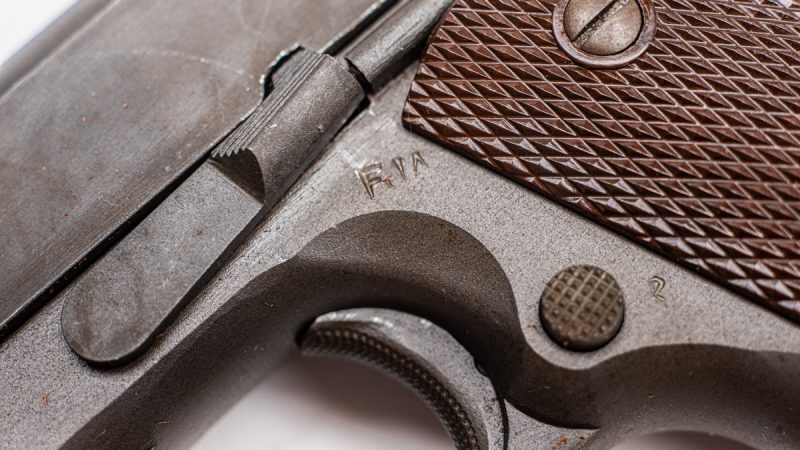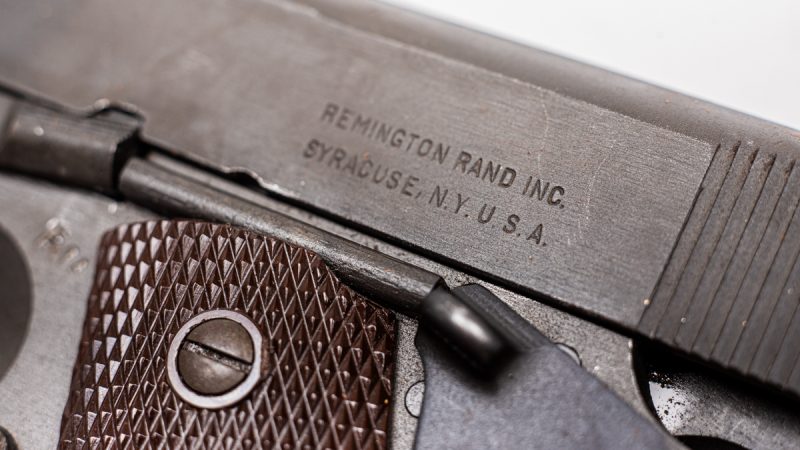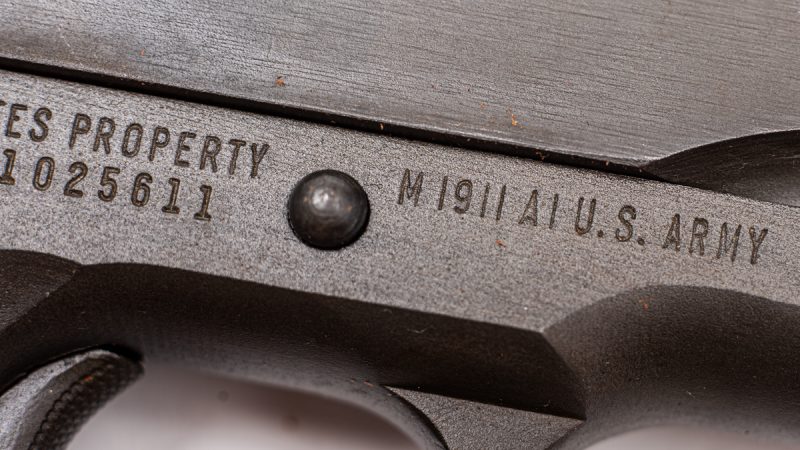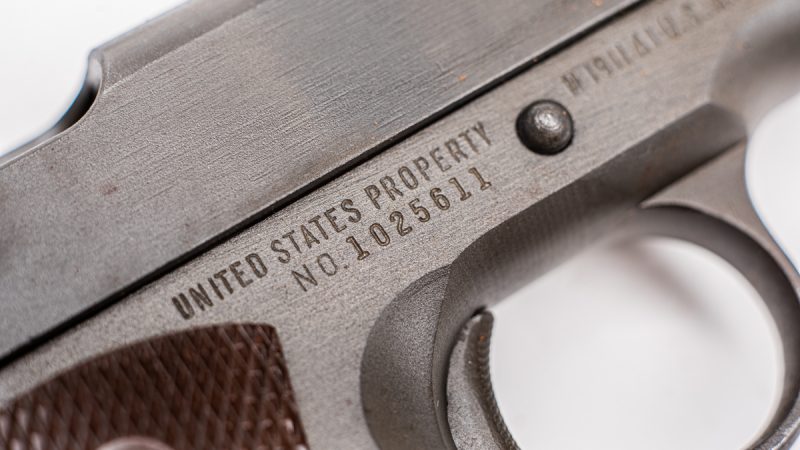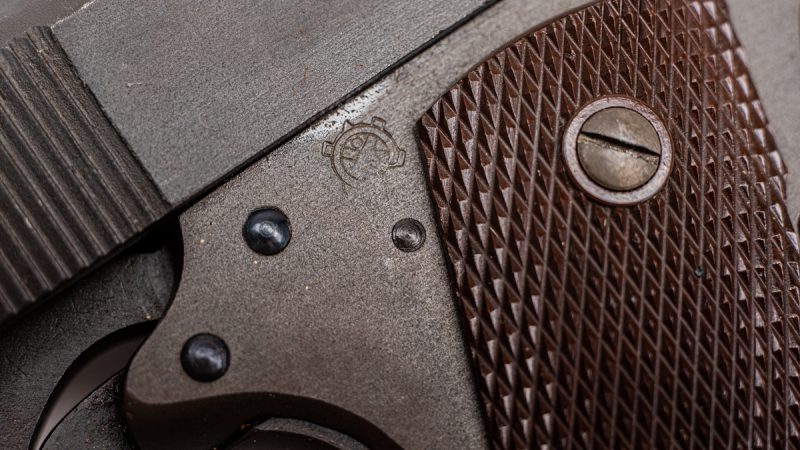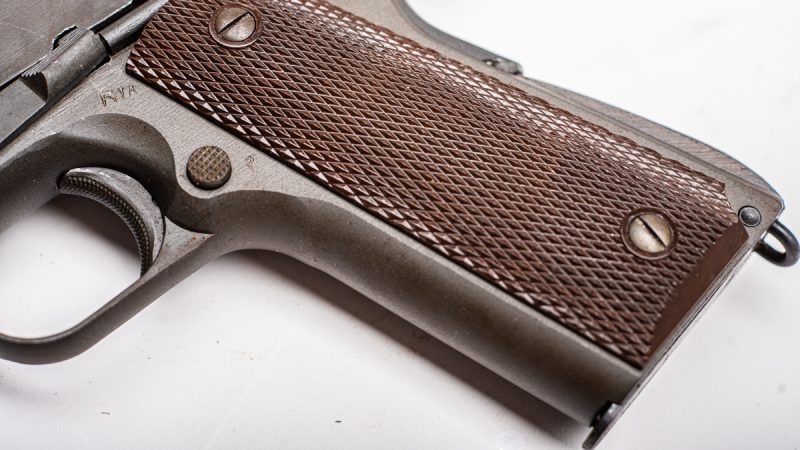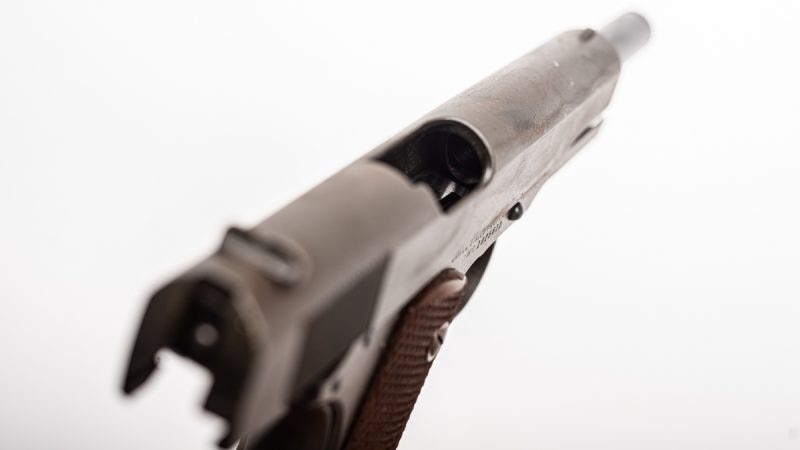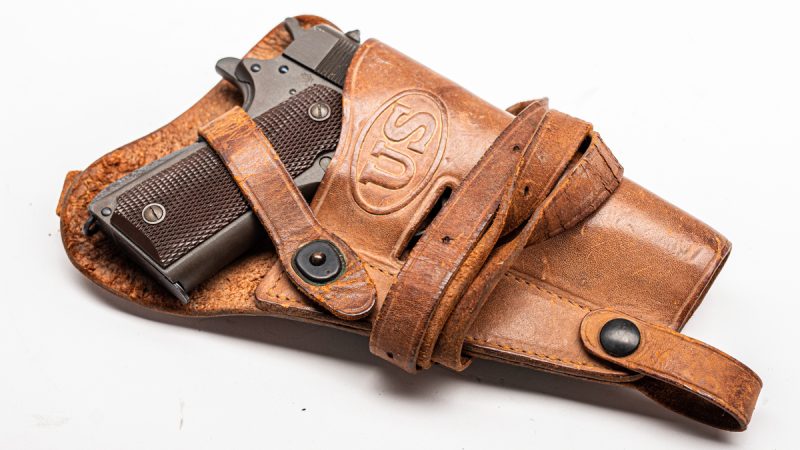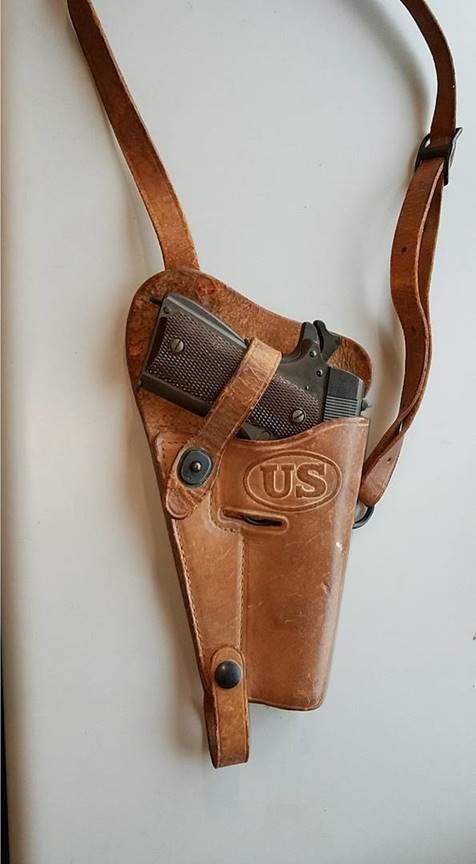A PILOT’S BEST FRIEND: WWII REMINGTON RAND M1911A1
20th Aug 2019
Source Credit to guns.com | by Chris Eger
Click here to view the original article.
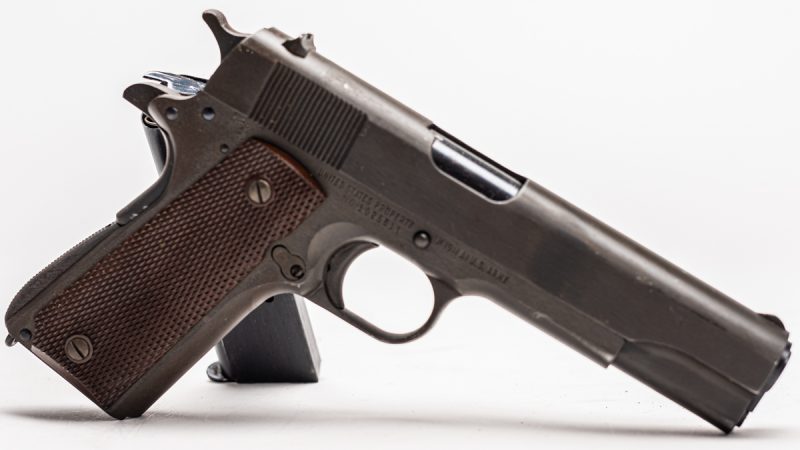
This 1943 Remington Rand M1911A1 is striking. (Photo: Richard Taylor/Guns.com)
One of the more interesting guns that have come through the Guns.com Vault in recent months is a World War II-era Remington Rand M1911A1. The gun came to us from the family of a man who was reportedly a B-17 bomber pilot during the conflict. While the golden rule in used firearms is “buy the gun, not the story,” this Government Issue .45 certainly has a lot to say just by looking at it.
Remington Rand, not to be confused with Remington Arms, was a business machine company formed in a merger between the Remington Typewriter Company and Rand Kardex Corporation during the Roaring Twenties. However, as with other gadget and widget makers, during WWII they retooled to help crank out the Arsenal of Democracy and win the war.
For Remington Rand, this meant making M1911A1 pistols, the standard U.S. military handgun since 1926. The company received drawings, gauges and tooling from the Army’s Springfield Armory, which had been previously used to manufacture M1911s and converted their “C” Division typewriter plant and warehouse in 1942 to war production. While Colt, Ithaca, railway equipment maker U.S. Switch & Signal, and even the Singer Sewing Machine company would produce over 1.8 million of these iconic handguns during the conflict, it was Remington Rand that delivered the most to Uncle Sam.
With a serial number that dates to 1943, the Remington Rand in the Guns.com Vault has what collectors consider Type 3 slide markings, a very crisp “FJA” Ordnance inspector’s mark of Col. Frank J. Atwood, an Ordnance Department wheel, and U.S. Property marks.
Lt. Col. Frank J. Atwood was the U.S. Army Ordnance officer in charge of war production in the Rochester district of New York from 1942 to 1946 and both the Remington Rand and Ithaca factories were under his control. M1911A1s accepted during that time from those makers will have his FJA mark. (Photo: Richard Taylor/Guns.com)
Remington Rand’s M1911A1 factory was located on Dickerson Street in Syracuse, New York, which is now a parking lot. (Photo: Richard Taylor/Guns.com)
While the M1911 was adopted before WWI, the “A1” series became standard in 1926. (Photo: Richard Taylor/Guns.com)
Note the U.S. Property marks (Photo: Richard Taylor/Guns.com)
U.S. Army Ordnance Corps wheel is one of the oldest insignia designs used by the U.S. Army. (Photo: Richard Taylor/Guns.com)
Note the condition of the grips and parkerized finish as well as the “P” proof mark by the magazine release and lanyard ring. (Photo: Richard Taylor/Guns.com)
When it comes to the barrel, this M1911A1 has one produced by High Standard as denoted by the “HS” mark on the lug. This is correct for late model Remington Rands as the typewriter and adding machine maker did not produce their own pistol barrels. High Standard, on the other hand, produced 5-inch M1911 barrels during the war for not only Remington Rand but also for Ithaca and US&S.
(Photo: Richard Taylor/Guns.com)
As for why the gun looks so minty, the story is that the gun was issued to said B-17 bomber pilot who only shot it to familiarize himself with it and returned home with the gun after the war, where it spent the rest of its life largely in storage.
WHY WOULD A PILOT HAVE A GUN?
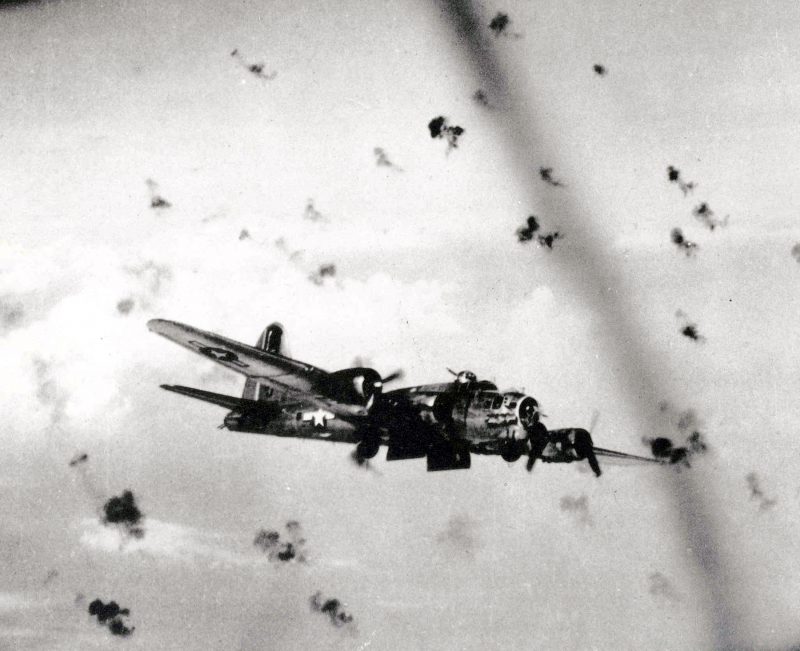
U.S. Army Air Force B-17 bombers flying through flak on their way to a target in Europe. At 25,000 feet, the temperature could drop below -60 degrees Fahrenheit but the Germans had their own way to keep things very hot for American aircrews. (Photo: U.S. Air Force photo)
This week marks the 77th anniversary of Mission #1, the first heavy bomber attack on Nazi-occupied Europe by the U.S. VIII Bomber Command, the England-based unit that was to grow into the mighty 8th Air Force. While that initial raid only fielded 18 B-17 bombers on a strike in occupied France, by Mission # 84, the famed Schweinfurt–Regensburg Raid — which was 76 years ago this week and coincides to the “born on” date of our Remington-Rand — the 8th Air Force sent 376 B-17s deep into Germany itself. By Mission # 817 in February 1945, the 8th Air Force was putting an amazing 1,437 bombers into the air over Berlin.
Over the course of the war, the 8th Air Force alone lost a staggering 4,145 bombers on missions over Europe. While aircrew were limited as to what they could bring along on their high altitude flights — for instance, most liquids were banned due to the likelihood of them freezing in the unpressurized aircraft — they were issued basic survival gear such as a special extreme cold-weather uniform, life vest, parachute and a pistol in case they had to “hit the silk” and try to escape and evade Axis patrols to make it to friendly lines, often with the help of local resistance groups.
While Navy aviators had to make do with various revolvers, Army Air Force aircrew were typically issued standard M1911A1s. The U.S. Air Force Museum has an example of one such gun on display carried by a WWII B-17 gunner that caught a piece of German flak on a mission.
The Remington Rand in the Guns.com Vault came from its owner complete with its 1943-marked Boyt M3 shoulder holster.
The U.S.-marked leather holster that comes with the M1911A1 is marked “Boyt 43” (Photo: Richard Taylor?Guns.com)
The M3, sometimes referred to as the “flyer” holster by militaria collectors to set it apart from later “tanker” holster models, was often issued to USAAF aircrews and occasionally to Army paratrooper officers.
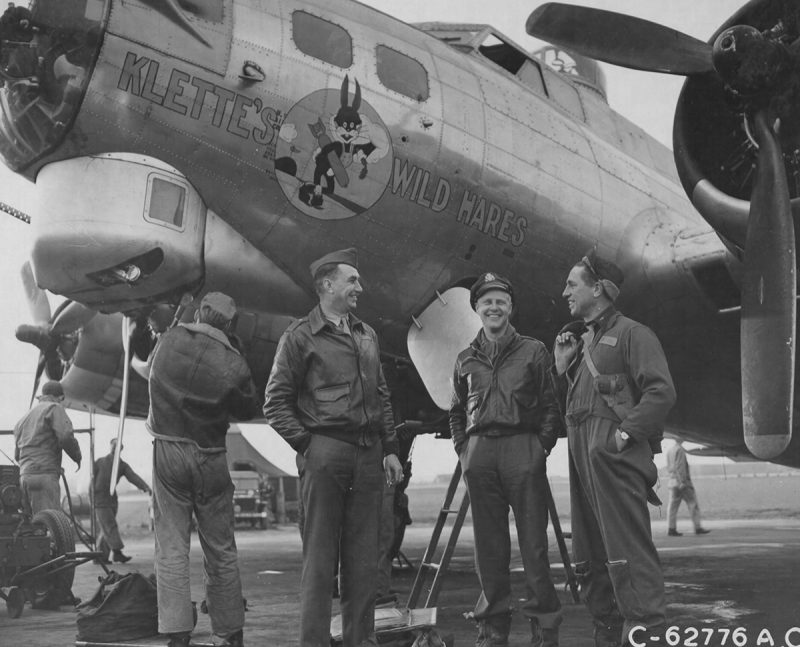
“England. A crew of the 91st Bomb Group, 8th Air Force, relax beside the Boeing B-17 Flying Fortress, Klette’s Wild Hares. They have just returned from a bombing attack on enemy territory.” Note the M1911 pistol and holster of the crewmember to the far right. (Photo: U.S Army Air Corps via National Archives)
In the end, while you can easily pick up any variety of 1911 clones, few are the real thing carried by the members of the Greatest Generation. Even when you do, military surplus 1911s are often “mixmasters,” with their parts swapped out over the years by military armorers and arsenals, leaving such pistols with a lot of character but little in the way of being all-matching. Meanwhile, this Remington Rand has escaped relatively unscathed and intact.
If only guns could talk.
History is just a click away. (Photo: Guns.com)


